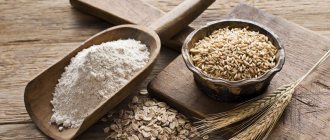Does smoking interfere with muscle growth? The undoubted harm of smoking is evidenced by advertising, the media, and scientific research, but despite all efforts, statistics show that the percentage of cigarette users is growing among both men and women, which puts Russia on the list of leaders in the number of smoking population. Of course, this indicator is not a reason for pride, and we must not give up in the fight against smoking.
The myth about compensation for nicotine harm
It is well known that improving your health through physical activity is beneficial: most people who go to the gym take care of their body. But not everyone can deny themselves the pleasure of bad habits - smoking and alcohol. At first glance, it seems that beneficial physical exercise can to some extent compensate for the damage caused by nicotine, but this is misleading.
The body of an athlete addicted to nicotine suffers incomparably more than the body of a “non-sports” smoker. When practicing bodybuilding, the main goal of an athlete is to make his body beautiful by building up sculpted muscle mass. To build big, beautiful muscles, an athlete needs fairly intense physical exercise with weights on the muscles.
Such loads have an impact, forcing many human organs to work more actively: the number of heart contractions increases, the breathing rate increases, and metabolic processes occur faster. If a heavy smoker is involved in bodybuilding or any other sport, as a result of the stress, the toxic substances accumulated in the body will be more actively absorbed into the blood and cause a destructive effect.
Cigarettes smoked immediately after training are especially harmful - the heated body will instantly absorb the proposed poison into the blood.
Cardiovascular and respiratory systems
We all know that this habit has a detrimental effect on the heart and causes serious breathing problems. A person who constantly smokes begins to experience shortness of breath even with minimal physical activity. This is why you are unlikely to meet people who seriously engage in, for example, running and smoke at the same time. This is incompatible because such a load requires an even breathing rhythm for a long time. If you smoke, then it is almost impossible to achieve this, because the blood thickens greatly, the flow of oxygen into it becomes difficult and it is incredibly difficult for the heart to pump it.
In strength sports, everything is a little different. This is an intense load, but for a short period of time, because after completing one approach, you rest for some time before the next. That is why people involved in strength training may sometimes not give up this habit. They do not need to maintain a constant breathing rhythm. However, this in no way makes the situation any easier. As you know, when working with weights it is very important to breathe properly. To be more precise, all strength exercises are performed while exhaling. This helps you complete them more efficiently. You must breathe as deeply as possible. The smoker’s lungs are simply not able to provide the required depth of exhalation, and accordingly the effectiveness decreases.
Harmful effects of nicotine on the bodybuilder's body
To answer the question of whether smoking affects muscle growth, it should be taken into account that the list of negative consequences that arise from smoking tobacco is very long.
There is no tissue or organ that would “indifferently” tolerate nicotine poisoning
The most important factors that explain why nicotine interferes with your success in training are:
How does alcohol affect muscle growth?
- The activity of protein synthesis decreases.
- The level of myostatin protein increases, which negatively affects the growth of muscle mass.
- The heart rate increases by a third.
- Blood vessels narrow.
- The lung capacity of a smoker is smaller than that of a non-smoker, which makes it impossible to breathe properly during strength exercises.
- Soot and phlegm prevent smokers from inhaling the oxygen they need.
- The level of stress hormones (cortisol and others), which inhibit muscle development, increases, and the level of testosterone necessary for bodybuilders decreases.
- Nicotine destroys vitamin C that enters the body with food, which affects the growth of muscle mass.
- Due to the constant supply of carbon monoxide, oxygen exchange in tissues is disrupted, and muscles experience “oxygen starvation.”
An athlete who smokes in the gym suffers from shortness of breath, nausea, tachycardia and other unpleasant sensations that negatively affect the quality of the workout. A reduced level of endurance does not allow you to train effectively according to a given program. So achieving beautiful, sculpted muscles is very difficult.
Some statistics
Russia ranks first among European countries in terms of the number of smokers. Yes, sadly, 70% of men and 23% of women smoke. Teenagers imitate adults in everything, so among boys 15-19 years old, 40% regularly smoke half a pack, and among girls - 7%.
By comparison, only 25% of all men in the United States smoke.
83% of people with diseased lungs and 90% with problems with the bronchi are smokers.
Prepared by: Anastasia Kuzheleva
What dangers await a smoking athlete?
A smoker's heart beats much faster than a non-smoker's. If a smoker is also actively pumping, then he forces his heart to work at its limit. As a result, heart failure acquired over time will put an end to training and strength exercises can be forgotten forever.
Sarcopenia
Long-term regular smoking leads to sarcopenia, a phenomenon of age-related muscle loss. Sarcopenia is an atrophic process that manifests itself mainly in people with a sedentary lifestyle, but in a smoker, the mechanism of muscle degeneration is triggered even in the case of constant physical activity. In this case, physical activity will not help - sarcopenia is activated at the gene level.
The cardiovascular system is most affected by smoking
What happens to the lungs of a smoking bodybuilder?
The lungs of a smoking athlete-bodybuilder have significant differences from the main respiratory organ of an ordinary person. A smoker's lungs are blue in color and the organ is covered with black dots. In the middle of the organ, a drop of a dark-colored substance is found, which includes resin and tar, which take a very long time to be eliminated from the body.
Sometimes the process of cleansing the lungs takes several years. In the middle of the organ there is phlegm, which fills the lungs to such an extent that due to difficulty breathing, a strong cough appears, bringing short-term relief. Each subsequent cigarette contributes to the accumulation of a new portion of liquid.
Healthy Growth Factors
Endogenous factors include:
- Genetic factors, that is, a person’s gender, heredity, nationality. These factors influence human growth and development either directly, by shaping a person’s hormonal background in a certain way, or indirectly, by influencing the body’s metabolism.
- Various types of damage that can interfere with the growth and development of the body. Trauma can be either physical or chemical, or result from some kind of infection.
Exogenous factors mean:
- Natural factors are the climate and other features of the region in which a person lives, such as the nature of the soil, topography, water quality and level of atmospheric moisture, the stability of ecosystems, and the frequency of natural disasters.
- Human economic activity and its impact on the environmental situation in the region of residence, as well as the economic situation.
- Social factors, that is, level of culture, nutritional factors, level of education and social status, living conditions, quality and availability of medical care and, of course,
- an individual's attitude towards his health.
Thus, it becomes clear that many of the factors that influence growth and development are beyond a person’s control. However, a person is quite capable of influencing many others: for example, changing the environment to a more environmentally friendly one or, at a minimum, giving up bad habits, in particular smoking.
How does nicotine affect muscles?
For successful muscle growth, several conditions are necessary that are crossed out by nicotine:
- The increase in muscle volume is directly proportional to the amount of oxygen involved in metabolism. Nicotine destroys this possibility. Oxygen deficiency in a bodybuilder who smokes also occurs because the lungs are clogged with phlegm, tar and tar. Lack of oxygen leads to muscle fatigue when a bodybuilder trains.
- Nicotine reduces the level of endurance of the cardiovascular system, which makes long-term exercise impossible.
- The narrowing of blood vessels negatively affects muscle nutrition. Athletes who smoke often suffer from hypertension, which prohibits training.
- Nicotine thickens the blood, which prevents nutrients from reaching the cells in sufficient quantities.
- Smoking interferes with the absorption of protein, the building material for muscles.
Dangerous changes in the body associated with smoking develop slowly and almost imperceptibly, but lead the body to irreversible consequences. Those who want to have a pumped-up figure and beautiful, sculpted muscles should decisively eliminate smoking from their lives.
Will a smoker be able to get pumped up?
Beautiful abs, sculpted and massive muscles. Many people today strive to make their figure an example to follow. But is it possible to swing and smoke? And most importantly, will this be of any use?
Scientists have discovered how cigarettes can affect muscle development:
- Nicotine triggers the production of myostatin, which interferes with the growth of muscle cells.
- After cigarettes, an enzyme is released into the bloodstream that breaks down proteins into amino acids. This slows down the process of building muscle mass.
- As weight increases, it becomes difficult for the body to supply all cells with oxygen, so symptoms of hypoxia such as weakness and fatigue may appear.
- After consuming cigarettes, a person feels a lack of appetite. It does not reach the daily calorie intake, which also increases the time it takes to achieve results.
If a person decides to engage in bodybuilding professionally, then he needs to quit smoking. This is necessary to constantly stay in shape and reduce the risk of cardiovascular diseases. The fact is that the greater the body weight, the more nutrients and oxygen the body needs.
If a person wants to get pumped up and smoke, then he needs to follow a protein diet.
Compromise solution
But unfortunately, this will not be easy for everyone. The main helpers in quitting smoking are proper motivation and willpower. If the athlete is not yet ready to make volitional decisions, he should try to minimize the harm from nicotine addiction.
To get the maximum effect from training, without completely giving up your bad habit, you should:
- Minimize the number of cigarettes you smoke per day.
- Do not smoke several hours before and one hour after training.
- Do not smoke after eating - a cigarette will inhibit the absorption of vitamins and amino acids useful for muscle growth.
- You should pay more attention to endurance exercises.
- Do not smoke before bed, it can cause insomnia. Healthy sleep is essential for body recovery and muscle growth.
The most logical solution to the problem is to quit smoking
Such a compromise can help the athlete slowly achieve his goals. Sometimes smoking athletes achieve certain successes in bodybuilding, but can you imagine how great the effect of training would be if they gave up the bad habit.
What will happen to the body if you quit smoking?
Strictly speaking, nicotine can be considered a fat burner - it dulls appetite and affects the body's use of free fatty acids. However, the above effects manifest themselves only at the initial stage of addiction to smoking.
At the same time, giving up nicotine provokes a “withdrawal syndrome” - a person literally does not know where to put himself and what to do with his hands. It is in this case that sport will come to the rescue. With the help of regular cardio, someone who quits smoking will be able to bring their cardiovascular and hormonal systems back to normal within just a few weeks.
Nicotine and testosterone
Smoking causes an imbalance in the hormonal system of athletes. At first, nicotine gives a surge of strength, which is quickly replaced by fatigue. The level of stress hormones (primarily cortisol) increases, the level of testosterone (3) and a number of other hormones important for gaining and maintaining muscle mass gradually decreases.
The use of nicotine (both in the form of smoking regular cigarettes and in the form of electronic devices or hookahs) leads to the release of serotonin and other “happy hormones” into the blood - which is one of the main elements in the formation of addiction. Nicotine also inhibits the action of the sleep hormone melatonin and smokers take longer to get enough sleep.
***
Despite the fact that, from a formal point of view, nicotine can be considered a fat burner, regular cigarette smoking has an extremely negative effect on the cardiovascular and respiratory systems, reduces endurance and the ability to exercise at full capacity. As a result, smoking impairs the availability of oxygen, disrupts protein synthesis and activates muscle loss.
Scientific sources:
- Ministry of Health: The number of smokers in Russia continues to decline, source
- Nicotine – Scientific Review on Usage, Dosage, Side Effects, source
- Smoking impairs muscle protein synthesis and increases the expression of myostatin and MAFbx in muscle, source
- Effect of cigarette smoking on levels of bioavailable testosterone in healthy men, source
- Health Effects of Cigarette Smoking, source
Consequences
Many people who combine smoking and playing sports, answering the question of whether smoking interferes with their fitness, claim that they do not experience physical discomfort during training and, generally speaking, feel good. This is not self-deception. Sometimes good health allows you to not feel the negative consequences of an unhealthy lifestyle for some time.
We can say about these people that they simply have not yet exhausted the reserve of safety measured out to them by nature, and if their lifestyle does not change, disastrous consequences are inevitable. Unfortunately, physical incompetence begins to be felt only when significant harm has been caused to health, and the consequences of an addiction become irreversible.
Recovery
It is known that muscles grow during rest, not training. But what kind of rest can we talk about if at this time the body must “give up” most of its available resources to eliminate the negative impact of a smoked cigarette.
I think that the above arguments speak for themselves. Conclusion: if you want to get the full benefit from your training and see results, it is better to quit the habit of smoking, as well as the attempt to “combine” alcohol and fitness. And if for some reason you cannot or do not want to do this, then be prepared for the fact that the effectiveness of your classes drops significantly.
What about one cigarette?
For comparison, we can give a simple example. If you take just one injection of testosterone and do not use PCT, then you are likely to experience all the side effects, from acne to manifestations of gynecomastia.
The situation is similar with cigarettes. Even if you smoke one cigarette a week, you are destroying your body, harming it:
- The synthesis and absorption of vitamin B6 is disrupted for almost 7 days.
- All good cholesterol in the blood is converted into harmful cholesterol, immediately sticking to the walls of blood vessels.
- You produce dopamine stimulation, which leads to disruption of neuromuscular connections and a decrease in strength.
- You are irreversibly destroying your lungs.
Therefore, even one cigarette causes significant harm and can provoke a strength plateau.
© ljsphotography — depositphotos.com
Sources[edit | edit code]
- https://journals.plos.org/plosone/article?id=10.1371/journal.pone.0173055
- https://www.theverge.com/2017/2/1/14460996/e-cig-vaping-risk-heart-disease-health-jama-study
- https://www.newscientist.com/article/2120440-switching-from-smoking-to-vaping-does-reduce-your-carcinogens/
- https://www.reddit.com/r/science/comments/3vxbzo/chemical_flavorings_found_in_ecigarettes_linked/
- https://onlinelibrary.wiley.com/doi/10.1002/tox.20153/pdf
- https://ajplung.physiology.org/content/early/2017/03/27/ajplung.00203.2016
- https://www.eurekalert.org/pub_releases/2017-10/ats-emt101817.php
How did the myth arise that sports and bad habits are compatible?
“In many sports, small doses of alcohol are not considered doping, and some athletes do not even hide their bad habits,” says Alexey Korochkin, a researcher at the Department of Exercise Therapy and Sports Medicine of the Russian State Medical University. “And the press circulates
examples of athletes who were the last to leave the bar in the evening, but the first to reach the finish line in the morning.”
Anti-alcohol hotline
You can get information on any issues related to alcohol consumption by calling the Healthy Russia helpline. The hotline operates at 8-800-200-0-200. Calls to it are free from all regions of Russia.
A hangover of any severity certainly does not contribute to the record, but such information increases sales to alcohol companies, which still sponsor competitions in some sports or place advertisements during their broadcasts.
How does sport help when giving up bad habits?
But playing sports and physical activity in general help at all stages of the fight against bad habits. If a person has recently given up alcohol or nicotine, physical activity helps fight withdrawal symptoms: movement distracts from cravings for a psychoactive substance and improves mood due to the production of natural joy hormones. When the addiction has already been destroyed, physical activity gradually helps restore
the body damaged by toxic substances and bring it into decent physical shape.
Hookah smoking and bodybuilding
A hookah is a special smoking device that allows you to moisturize and cool the inhaled smoke. The biggest misconception at the moment is the opinion that smoking a hookah is less harmful to the body than smoking regular cigarettes. In fact, everything happens exactly the opposite. Due to the high humidity of the smoke, hookah smoking causes less throat irritation, which creates a feeling of false security. According to studies, compared to one cigarette, a hookah produces 125 times more smoke, 25 times more tar, 10 times more carbon monoxide and 2.5 times more nicotine. If you compare a cigarette and a hookah, it’s about the same as a AA battery and a car battery.
Smoking a hookah usually takes about 40 minutes. During this time, about 50-200 breaths are taken through the mouthpiece. In total, this amounts to approximately 0.15 to 0.50 liters of smoke inhaled inside. Thus, in an hour of hookah smoking, the average person consumes approximately 150 times more smoke than he could get from smoking one cigarette. In the case of hookah, smoking and bodybuilding is the same as taking out a loan and being happy that you have a lot of money. At first, it seems that the whole world is in your pocket, but this usually does not last long. Nicotine, tar and sulfur oxide, which enter the body in large quantities, not only undermine health, but create conditions under which hookah smoking is a time bomb.
The special tobacco used to fill the hookah contains 25 mg of nicotine per standard 50 gram pack. One such pack is usually enough to fill a hookah 4 times. Purely mathematically, it turns out that one hookah refill contains 6.25 mg of nicotine, while one cigarette, as a rule, contains no more than 0.8 mg of nicotine. Thus, it will not be difficult to calculate that one hookah refill contains almost 8 times more nicotine than one cigarette. This also includes an increased incidence of gum disease, the risk of developing chronic bronchitis and, most importantly, a 5-fold risk of developing lung cancer compared to a non-smoker. Is hookah smoking worth the risk? Of course not.









